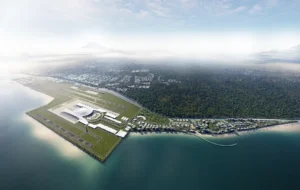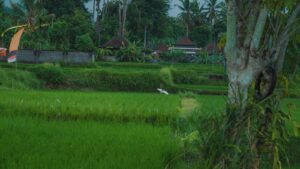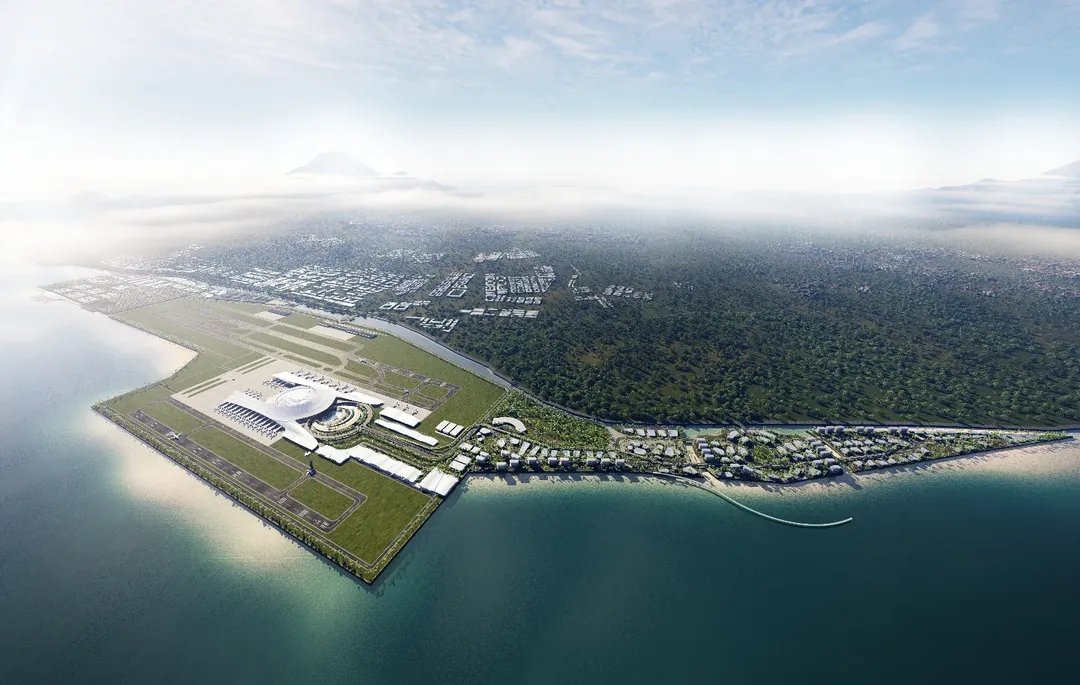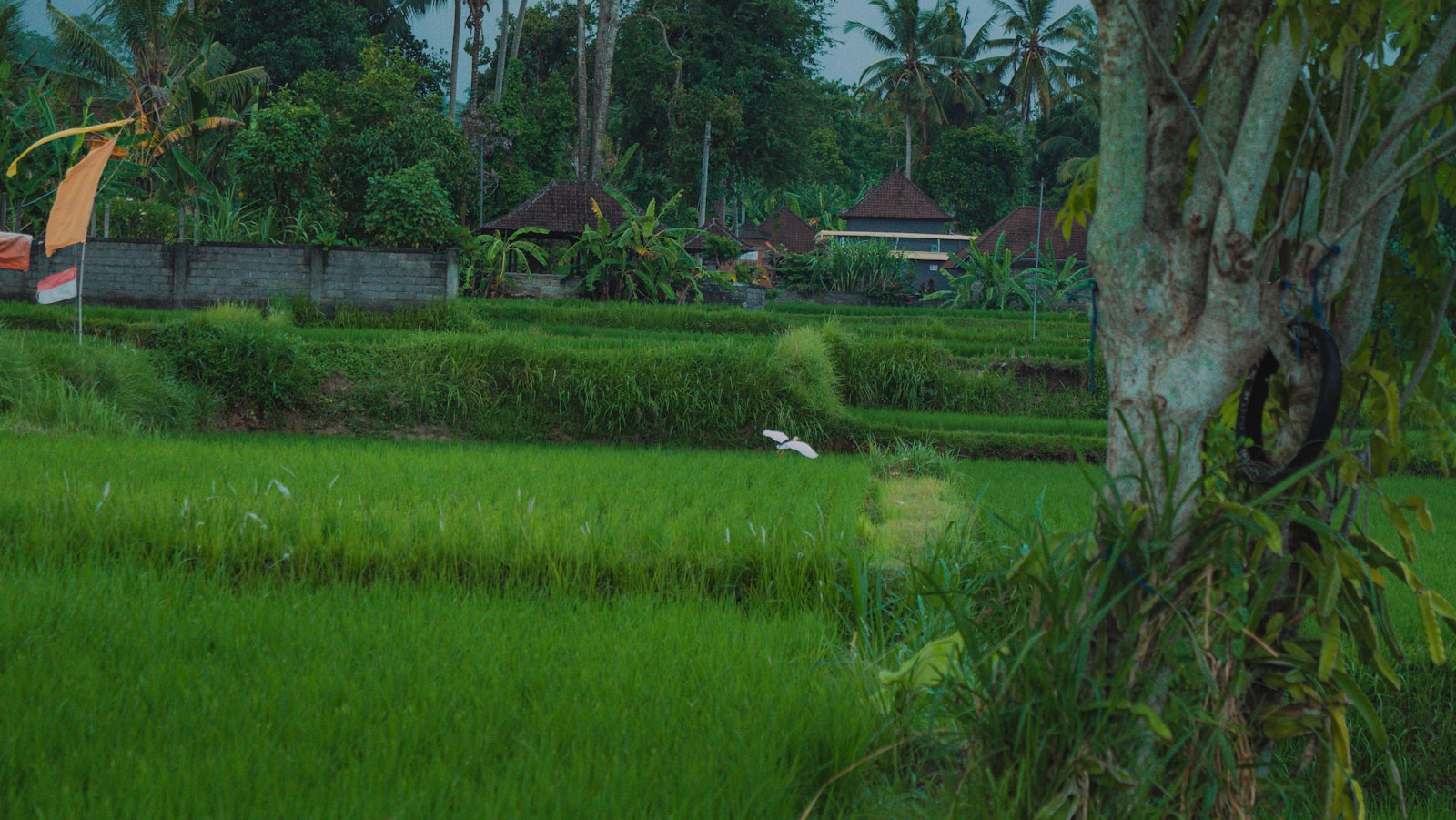Canggu at a Crossroads: How Overtourism and the Digital Nomad Boom Are Shaping Bali’s Hippest Village
Quick Read TL;DR
Canggu, Bali’s hipster hotspot, has transformed from serene rice fields into a booming digital nomad hub but at what cost? Overtourism in Canggu fuels traffic chaos, skyrocketing rents, and cultural erosion, while locals remain silent, caught between economic hope and deep cultural traditions. Unlike European cities that protest overtourism, Balinese villagers rationalize the disruption, viewing tourism as both blessing and burden. As rice paddies vanish under luxury villas and sacred temples become Instagram backdrops, Canggu teeters on the brink of losing its soul. Dive into this in-depth exploration of how overtourism and the digital nomad boom are reshaping Bali’s identity, why locals tolerate the chaos, and what sustainable tourism might look like for the island’s future. Discover the untold story behind Bali’s “paradise.”
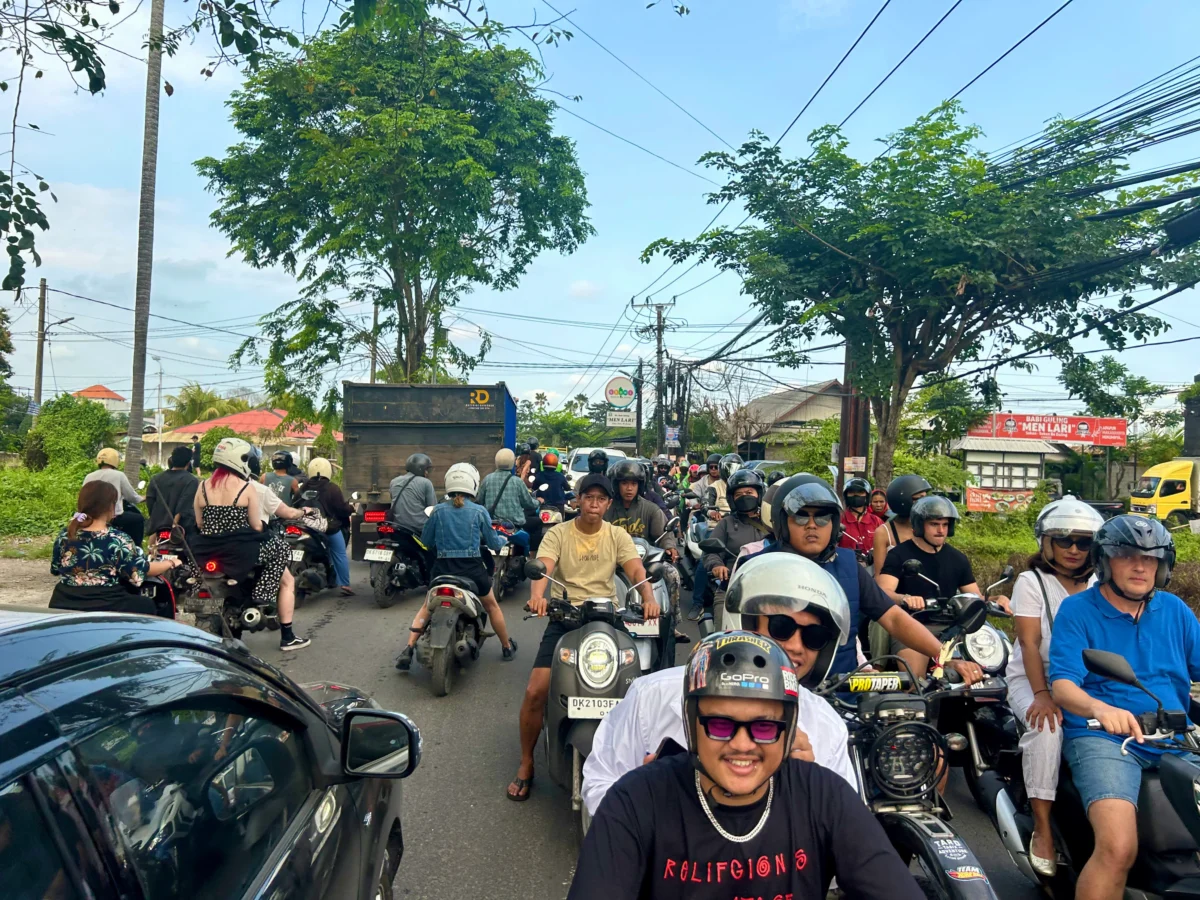
Paradise in Peril
Bali. Just the word conjures images of swaying palms, brilliant surf breaks, and temples hidden amid emerald rice fields. It’s a place many dream of escaping to — and a place millions actually do.
But under the Instagram glow, a different Bali pulses beneath the surface, especially in places like Canggu. Once a quiet coastal village, Canggu has exploded into a global magnet for digital nomads, surfers, influencers, and entrepreneurs. Streets that once echoed with the rustle of coconut palms now thrum with motorbike horns and techno beats pouring from neon-lit beach clubs.
And while tourists still call it paradise, for locals, a more complicated truth has emerged.
This is the story of how overtourism and economic hope intertwine in Canggu — why locals tolerate chaos that would spark street protests in Europe, and whether the village can navigate its way back from the brink without losing its soul.
Contents
- The Transformation of Canggu: From Rice Fields to Digital Playground
- Bali’s History with Tourism: How We Got Here
- Understanding Overtourism: What It Really Means
- The Digital Nomad Boom: Blessing or Curse?
- Economics vs Culture: The Balinese Balancing Act
- The Silent Struggle: Why Canggu Locals Rarely Protest
- The Environmental Toll: Rice Fields Paved Over
- Cultural Shifts: From Odalan to EDM
- Local Voices: Stories from the Ground
- Power and Silence: Why Protesting Isn’t “Bali”
- Who Profits? Winners and Losers in Canggu’s Boom
- Managing the Chaos: Lessons from Other Destinations
- What Does Sustainable Tourism Really Look Like for Canggu?
- The Future: Can Canggu Avoid Becoming Just Another Tourist Ghetto?
- Final Thoughts & Challenges
- Tables and Data
The Transformation of Canggu: From Rice Fields to Digital Playground
Let’s roll back the clock.
Twenty years ago, Canggu was the place surfers came to escape the crowds of Kuta. You’d find cows grazing beside the roads, kids flying kites in the breeze, and a single warung (local café) offering mie goreng and cold Bintang.
Today, those same roads are clogged with SUVs, digital nomads in yoga pants, and neon signs advertising craft cocktails. Villas sprout like mushrooms where rice paddies once glistened in the sun. Scooters zoom past café after café, each one more Instagrammable than the last.
The statistics tell the story:
- In 2010, Canggu’s population hovered around 6,800.
- By 2023, it had surged past 9,000 — not counting thousands of digital nomads living semi-permanently in Airbnbs.
- Over 734 villas dot the area, with dozens more under construction.
- Land prices have exploded by 600% in the past decade.
A local farmer, Mr. S, summed it up:
“My father farmed here. Now, I can’t afford to buy the land my father worked on.”
It’s a story of opportunity… and loss.
Bali’s History with Tourism: How We Got Here
Bali has been a tourist darling since the 1930s, when Western artists and anthropologists swooned over its mystical dances and colorful ceremonies. But the modern boom began in the 1970s, with:
- Direct flights from Australia and Europe
- A surge in backpacker tourism
- The rise of “Bali chic” hotels in the 1990s
- Government promotion of Bali as a “cultural paradise”
Yet tourism has always been a double-edged sword. Early scholars warned that Balinese identity was becoming commodified. Rituals once performed for gods and ancestors became performances for tourists wielding cameras.
The 2002 and 2005 Bali bombings slowed growth briefly. But by 2015, Bali was back with a vengeance, fueled by cheap flights and the social media boom.
Canggu’s story fits perfectly into this larger timeline — an unplanned surge with unintended consequences.
Understanding Overtourism: What It Really Means
Overtourism sounds simple: too many tourists, not enough space. But it’s more nuanced:
- Physical capacity: Roads, sewage, and water systems can’t keep up.
- Environmental damage: Ecosystems get trashed.
- Cultural strain: Locals lose access to sacred sites or traditions.
- Psychological fatigue: Residents become numb, resentful, or alienated.
In Europe, overtourism sparked protests in Barcelona, Venice, and Amsterdam. Locals demanded limits on Airbnb, caps on cruise ships, and higher tourist taxes.
But Bali’s overtourism takes a different shape — quieter, more insidious, and intertwined with daily life.
The Digital Nomad Boom: Blessing or Curse?
Few forces have shaped modern Canggu like the digital nomad wave.
Digital nomads bring:
- Steady income into cafés and coworking spaces
- Global connections and ideas
- Demand for quality services (wifi, yoga studios, organic food)
But they also:
- Drive up rental prices beyond local reach
- Disrupt traditional village rhythms
- Often live in a bubble, disconnected from local culture
Canggu’s digital nomad population grew from a few hundred in 2015 to nearly 5,000 by 2023. Many locals view this group as both savior and threat.
Ms. W, a young Balinese woman working for a digital media firm, said:
“I learn so much working for foreign clients. But sometimes I feel like a servant in my own land.”
Economics vs Culture: The Balinese Balancing Act
Bali is uniquely tied to tourism. Many locals measure life in terms of:
- Paket wisata (tour packages)
- Temple ceremonies funded by tourist donations
- Weddings scheduled around tourist high seasons
Tourism brings:
✅ Jobs for young people
✅ Higher wages than farming or fishing
✅ Infrastructure like roads and water lines
✅ Prestige and a modern lifestyle
But it also brings:
❌ Skyrocketing living costs
❌ Loss of traditional farming lands
❌ Cultural dilution
❌ Environmental stress
A priest in Canggu told researchers:
“Tourism is like fire. It warms you, but it can burn you too.”
The Silent Struggle: Why Canggu Locals Rarely Protest
In Europe, overtourism leads to loud demonstrations. In Bali, people mostly… accept it.
Why?
- Economic dependence: Many locals earn their living from tourism.
- Cultural norms: Harmony (rukun) is sacred. Open conflict is taboo.
- Historical trauma: After political purges in the 1960s, dissent became dangerous.
- Religious beliefs: Many believe the gods will balance things in time.
Even when drunk tourists vomit near temples, locals often shrug it off as “consequences of tourism.”
The Environmental Toll: Rice Fields Paved Over
Perhaps no image captures Canggu’s transformation better than rice fields becoming villas.
- In 2010, Canggu had ~154 hectares of rice paddies.
- By 2023, only 80 hectares remained.
Farmers often sell because:
- Land prices have soared.
- Farming yields low income.
- Villa developers pay in cash.
But selling land is a devil’s bargain. One local lamented:
“After the money’s gone, you can’t bring the rice field back.”
Rice paddies are more than crops—they’re sacred ecosystems intertwined with Balinese subak irrigation culture, a UNESCO heritage.
Their loss isn’t just environmental—it’s spiritual.
Cultural Shifts: From Odalan to EDM
Canggu is a place of odalan (temple festivals)… and EDM parties.
Locals speak of:
- Tourists dressing in bikinis near sacred temples.
- Drunken brawls in front of holy sites.
- Loud music shaking family homes.
Ms. F, a student living near Batu Bolong, shared:
“The music from the Old Man discotheque shakes my windows. At first, I cried. Now, I study at 1am when it’s quieter.”
Local traditions like gotong royong (community work) are fading. Young people choose jobs in tourism over communal duties, leading to:
- Lower village participation
- Conflicts between generations
- New social hierarchies based on tourism income
Even dress styles are changing, with younger Balinese adopting Western fashion.
Local Voices: Stories from the Ground
Let’s meet a few locals whose lives embody this complex reality.
Mr. O, 48, village leader, non-tourism worker:
“It’s too crowded. Tourists disrespect temples. But tourism pays for village ceremonies. We can’t say no.”
Mr. V, 27, villa owner:
“I studied law. But now, I run the family villa. Tourism is our future.”
Ms. F, 21, homestay owner:
“I built more rooms. We need money. But sometimes, I miss how quiet it used to be.”
Mr. S, 60, former farmer:
“I sold my fields. Now there’s concrete. I regret it. But it’s too late.”
These stories capture the tug-of-war between economic survival and cultural loss.
Power and Silence: Why Protesting Isn’t “Bali”
Western visitors sometimes ask: “Why don’t locals protest?”
The answer lies deep in Balinese social fabric.
- The traditional village system (desa adat) has immense power.
- Balinese culture values collective harmony over individual dissent.
- Hindu teachings emphasize acceptance and balance.
- Past political violence taught people to avoid challenging authority.
While Europeans march in the streets, Balinese people often choose silent resistance:
- Subtle refusal to cooperate
- Passive non-participation
- Private conversations instead of public protest
Who Profits? Winners and Losers in Canggu’s Boom
Not everyone benefits equally from Canggu’s tourism gold rush.
Winners:
✅ Villa and homestay owners
✅ Young Balinese fluent in English
✅ Landowners who sold early
✅ Foreign entrepreneurs running bars, gyms, and coworking spaces
Losers:
❌ Small farmers who sold land too cheaply
❌ Locals working low-wage service jobs
❌ Older residents priced out of their own neighborhoods
❌ Environmental resources (rice fields, water supply)
This uneven distribution fuels resentment, even if rarely spoken aloud.
Managing the Chaos: Lessons from Other Destinations
Other places have faced overtourism — and tried solutions:
- Barcelona: Banned new hotels, regulated Airbnb.
- Venice: Limited cruise ships, introduced entry fees.
- Amsterdam: Curbed party tourism, limited tourist shops.
Could Canggu follow suit?
Locals and researchers suggest:
- Capping new villa permits
- Taxing tourism revenue for local infrastructure
- Creating cultural education programs for tourists
- Zoning laws to protect sacred spaces
But enforcing rules in Bali, where powerful interests and corruption intertwine, is a monumental challenge.
What Does Sustainable Tourism Really Look Like for Canggu?
Here’s what a more sustainable Canggu might look like:
- Balanced growth: Not just villas and beach clubs, but green spaces and community centers.
- Fair economics: Locals owning a bigger share of tourism businesses.
- Cultural respect: Tourists educated on Balinese customs.
- Environmental protection: Rewilding some areas, protecting waterways.
- Data-driven planning: Using tourism data to manage crowds.
Most importantly, locals need real alternatives so they’re not hostage to tourism alone.
The Future: Can Canggu Avoid Becoming Just Another Tourist Ghetto?
Canggu stands at a crossroads.
One path leads to becoming another Kuta: congested, overbuilt, losing its magic. The other leads to a new model of tourism that:
- Sustains culture and community
- Protects nature
- Shares wealth more fairly
It’s not too late for Canggu. But time is running short.
As one village leader put it:
“If we don’t act, one day tourists will leave because there’s nothing left to see.”
Final Thoughts – Challenges
Canggu is a place of contradictions.
It’s a digital nomad paradise… and a village losing its soul. It’s a land of economic hope… and creeping alienation.
Unlike Venice or Barcelona, where protests fill the streets, Bali’s struggles unfold in whispers. Locals rationalize the chaos, hoping the blessings of tourism will outweigh the cost.
The tragedy is not overtourism alone—it’s that many Balinese feel they have no other choice.
Canggu’s story is a global warning. Paradise can’t survive on selfies and surfboards alone. It needs space to breathe, room for tradition, and people empowered to shape their own future.
Let’s hope it’s not too late.
Canggu Data
| Metric | 2010 | 2023 |
|---|---|---|
| Population | ~6,800 | ~9,000 |
| Digital nomads | ~0 | 4,710 |
| Villas | <50 | 734 |
| Rice field area (hectares) | 154 | 80 |
| Avg. land price increase | — | +600% |



